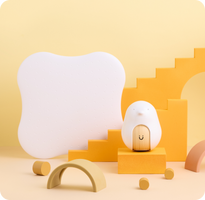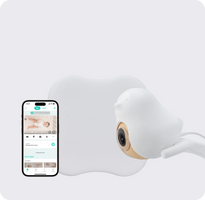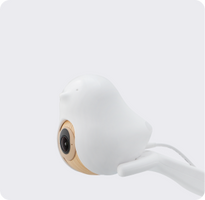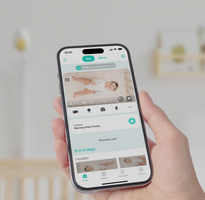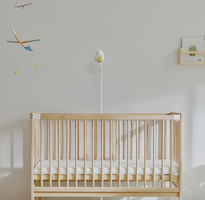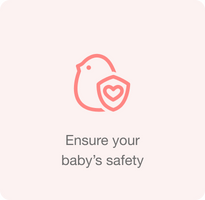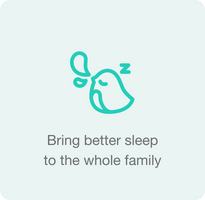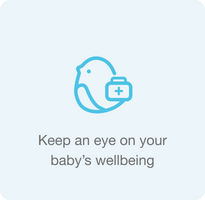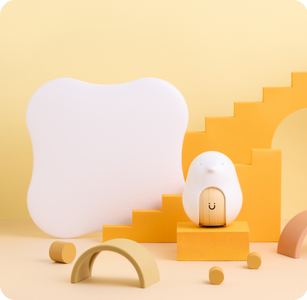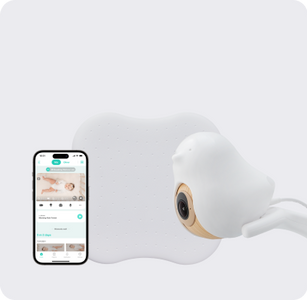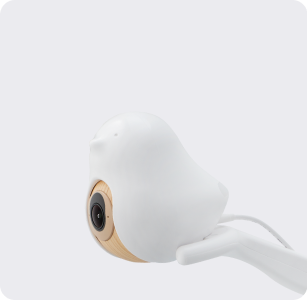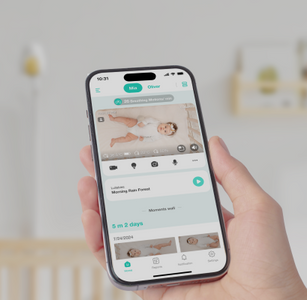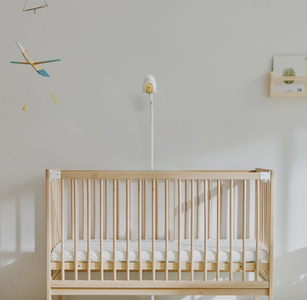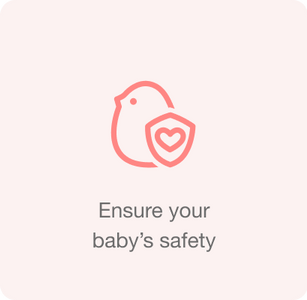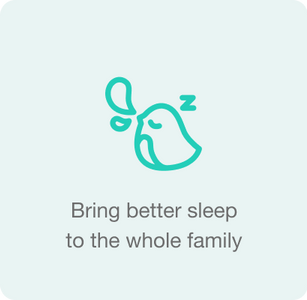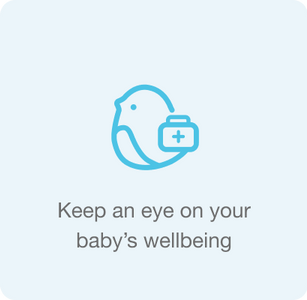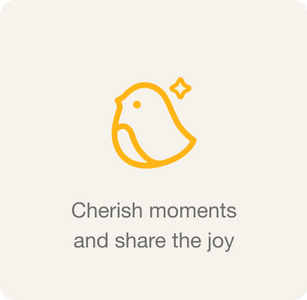No Cry Sleep Solutions: Sleep Training Without Crying it Out
These No-Cry Sleep solutions will help you sleep train your baby by solving sleep problems or preventing them before they appear! Get more sleep soon and help your baby do the same.
For many parents, it feels like there aren’t any no-cry sleep solutions when sleep training baby. First of all, the practice gets a lot of bad press because nobody likes to hear a baby cry. Many assume that a person with a heart will pick that baby up and soothe them. However, sleep training and crying aren’t inherently linked. Not according to many experts, at least. In fact, if you want to check out some books written by sleep training experts while you’re still pregnant, check out our post about it.
We particularly like Dr. Marc Weissbluth’s no-cry approach to sleep training seen in Healthy Sleep Habits, Happy Child because there are a lot of helpful solutions around it beyond the "cry-it-out" method. He has tested them himself, many parents swear by it, and we much prefer the idea of preventing sleep problems by creating consistent routines for babies than solving sleep problems by having to endure some crying. Regardless, neither of these methods has to involve extensive crying or abandonment of any kind. You can check out more sleep training method options here.
Baby Sleep Training
To reach no-cry sleep training and solutions, we have to establish why this is a thing in the first place. What are “cry” sleep solutions? What’s the sleep problem that we’re trying to solve? Sleep training your baby only makes sense once you have a child and haven’t had a full night’s sleep in… well, what year is it, again? Even though newborns do actually “sleep like babies,” it’s not long after that sleeping long and hard becomes a thing of the past.
The problem is that, though many people think babies will naturally sleep when they want to, that doesn’t quite seem to be the case. Babies, like us, will fight sleep to get more stimulation. For us, it’s Netflix, video games, a friendly gathering, a late flight. For babies, it’s spending more time with mom and dad, more playtime, or other kinds of stimulation. So what happens when any of us, baby or adult, get overtired? We get cranky and sometimes (we’re not pointing fingers here) we cry.
Sleep Training is the practice of teaching your baby to go to sleep once they start feeling drowsy and stop all stimulation before they’re overtired. This with the prized end result of your baby going to sleep at consistent schedules, and being able to fall back asleep during sleep arousals at night and after feedings without much help. Basically, when your baby’s next time to sleep comes around, they’ll be able to be put in their crib, still awake though tired, and put themselves to sleep. Sound like magic? Maybe, but many parents swear by it.
Some Sleep Training Methods involve picking the baby up, soothing them without looking at them or talking to them, and, of course, there’s the dreaded cry-it-out method which we’ll talk about later.
We’ve also asked people why they choose to sleep train and why they don’t.
Let’s take a look at Dr. Weissbluth’s approach.
Solving Sleep Problems vs Preventing Sleep Problems
While Dr. Marc Weissbluth isn’t by any means a “no-cry sleep training” sort of physician, he believes it’s often not necessary to apply cry-it-out with babies that have normal sleep problems (like they can’t put themselves to sleep). Sleep training for Weissbluth begins really early, (as early as pregnancy!) and his no-cry sleep training tips are all about the prevention of sleep problems.
“Prevention versus treatment of sleep problems
There sometimes appears to be a contradiction between whether or not to let your child cry. For 80 percent of babies who have common fussiness, if the parents have ample resources for soothing, sleep solutions that involve no crying, such as the “one-to two-hour rule,” should work to prevent sleep problems. A few, about 5 percent, of common fussy babies do become very overtired four-month olds. To treat or correct the sleep problem, some crying might occur. However, in this group, improvement in sleep patterns and improvement in the child is often dramatic and rapid.”
The 1-2 hour rule is basically that you should put your child down to sleep 1-2 after they wake during sleep training and before, too. That’s the period after which your baby will start to get overtired, then cranky, and before you know it, start screaming. Keeping a good time log of your baby’s sleep schedule will allow them to settle into sleep training quite easily and avoid the crying problem."

The Cry-it-Out Method
If we look at it from Dr. Weissbluth’s perspective. There are two reasons why the cry-it-out method is used by parents. Not because they’re heartless and mean, but because they’re faced with one of two scenarios. First, maybe their baby is one of those 20% of babies that struggle more with colic and other problems. Dr. Weissbluth highly recommends the crying method for these babies. Or, perhaps, their child developed sleeping problems in the first few months. They suffer from sporadic sleep schedules, can’t put themselves to sleep, or other problems. For Weissbluth, these are reasons why you might see some more crying during training.

No-Cry Sleep Solutions
If the focus of your sleep training is to prevent problems, you’ll likely not have to deal with much crying at all. If, however, that ship has sailed and no-cry sleep solutions are all you can search for, one-handed with bags under your eyes and a baby on your hip, then try solving sleep problems with one of these resources by Dr. Weissbluth.
“ ‘No cry’ sleep solutions
- Start early, when you come home from the hospital, to avoid the overtired state by trying to soothe your baby to sleep within one to two hours of wakefulness.
- Always hold your baby, always respond and soothe your baby as long as needed to induce sleep, sleep with your baby.
- Always respect “drowsy signs” so your baby never becomes tired.
- Always tried to put your child to sleep drowsy but awake.
- Establish and consistently practice bedtime routines.
- Practice scheduled awakening, also known as focal feeding.
- Get fresh air in between naps, go for a walk Control the wake-up time.
- Slowly and gradually give your child less attention around falling asleep or during the night, a fade procedure.
- White noise
- Room-darkening window shades
- Relaxation
- Stimulus control”
There’s also Dr. Weissbluth’s “maybe cry” solutions, for which- honestly- we appreciate the honestly. Maybe we won’t always get the no-cry sleep training right but at least we can strive for “little cry” or “maybe cry” and reach some success.
“ ‘Maybe cry’ sleep solutions
- Father puts baby to sleep
- Make bedtime earlier
- Focus on the morning nap
- Sleep rules
- Silent return to sleep
- Day correction of bedtime problems”
You might wonder why “fathering putting baby to sleep” is a “maybe cry sleep solution”. First of all, Weissbluth says “father” can just be a secondary guardian or caretaker, but also since this person is less used to putting the baby to sleep, it can cause some reluctance. This reluctance might turn into a short length of crying.
In short, to get the best baby sleep (and mom and dad sleep) for every development stage and achieve no-cry sleep training, apply these methods and try sleep problem prevention if at all possible. Want to see more about months 1-6 of sleep training baby? Check out our post about it here.

Cubo Ai
Smart Baby Monitor, bird, techie, baby guru, and sleep-safety enthusiast. Cubo has a keen eye for detail, loves baby photography, and never sleeps on the job. You can find Cubo in thousands of nurseries around the world and here on the blog helping parents learn more about the topics they care about.


